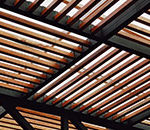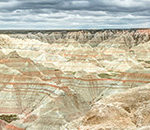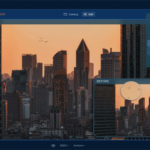Cartography is the study and practice of creating maps. Imagine a robot performing the task. Like Google Earth, the machine would have to take dozens of detailed square-shaped photographs and patch them together to create an enormous image. Now imagine a robot doing that same process–except instead of a satellite, it’s a macro lens, and instead of Earth it’s a human face:
This project is the brainchild of Daniel Boschung, an experimental German photographer and photojournalist. The video does not do his work justice at all: the images look like standard, if more detailed than usual, head shots.
To get the real effect, you need to visit the project’s main website and tour the portraits yourself. You can zoom in from a fairly attractive face, like this…
Into this…
And ultimately this…
That’s actually not even the closest one could go, but to zoom in any more makes the image look unidentifiably human. Which, I believe, is partly Boschung’s goal: to dehumanize the human face, to make it look static and explorable from a mechanical, even scientific perspective.
“These facial landscapes are dismaying – why? Emotions are completely missing. Emotions show up only briefly while macro photography takes half an hour. The person has to stay motionless while being photographed by the robot.”
Boschung used a Canon EOS 5D Mark II with a 180mm macro lens, which he transformed into a telecentric lens, along with the unique Scoro S 32000 RFS 2 flash to withstand the technical demands of the shoot.
The entire rig was controlled by an ABB industrial robot, controlled by a software script written especially for this project. Boschung monitored the progress on a computer, but purposely stayed away from the lens itself as much as possible, allowing the automaton to do the work of taking 600 individual photographs, and compiling them into a portrait made up of a baffling 900 million pixels.
Can you recognize 900 million pixels when you see them? The result is subtle, to say the least—until you zoom in.
Like This Article?
Don't Miss The Next One!
Join over 100,000 photographers of all experience levels who receive our free photography tips and articles to stay current:









Leave a Reply